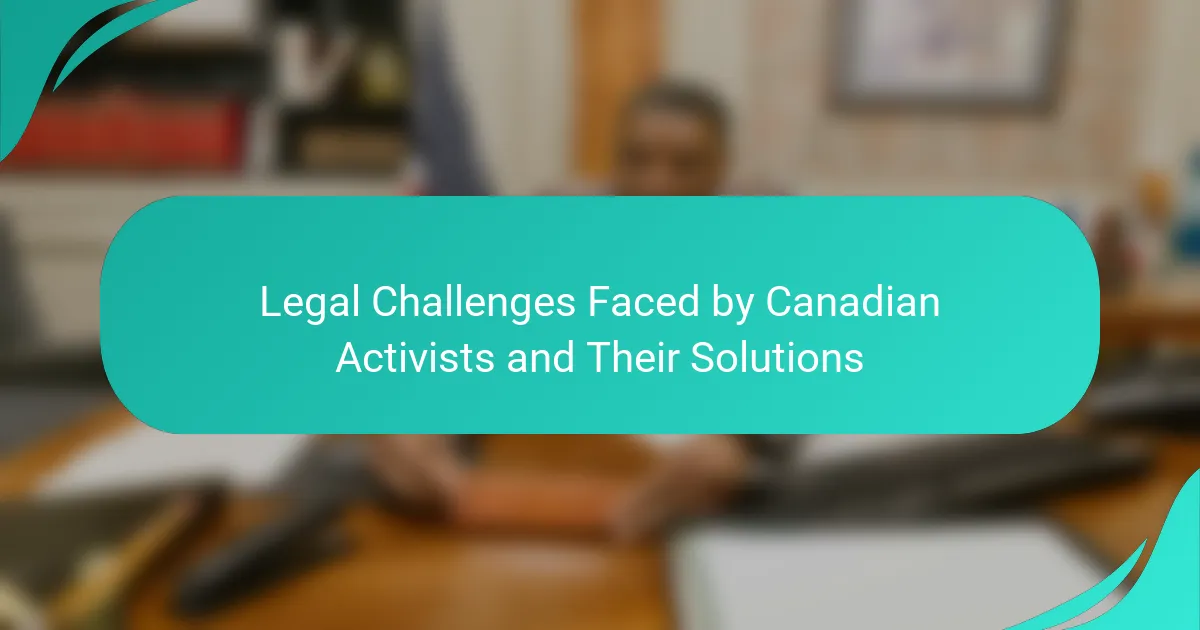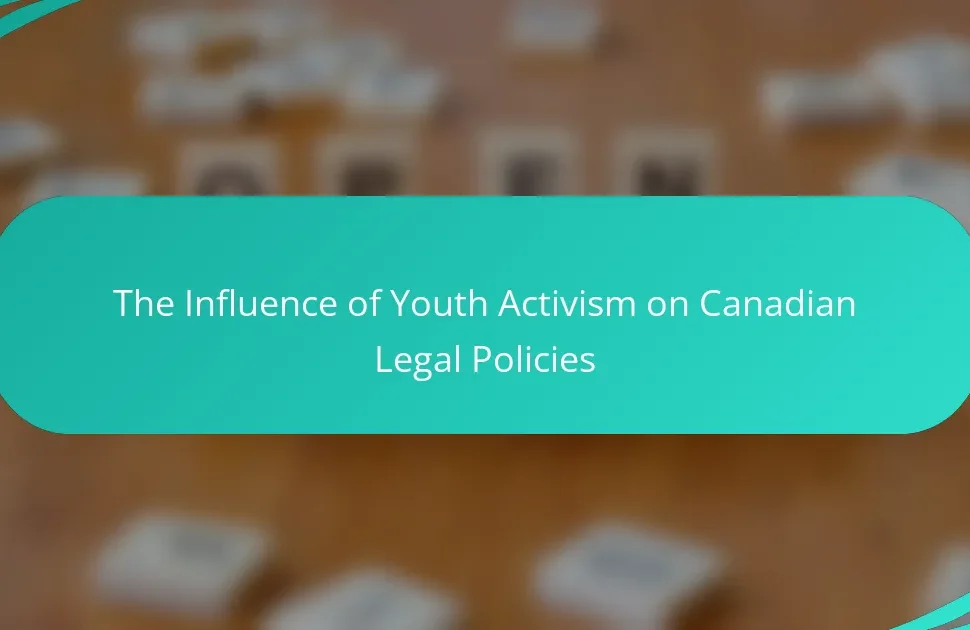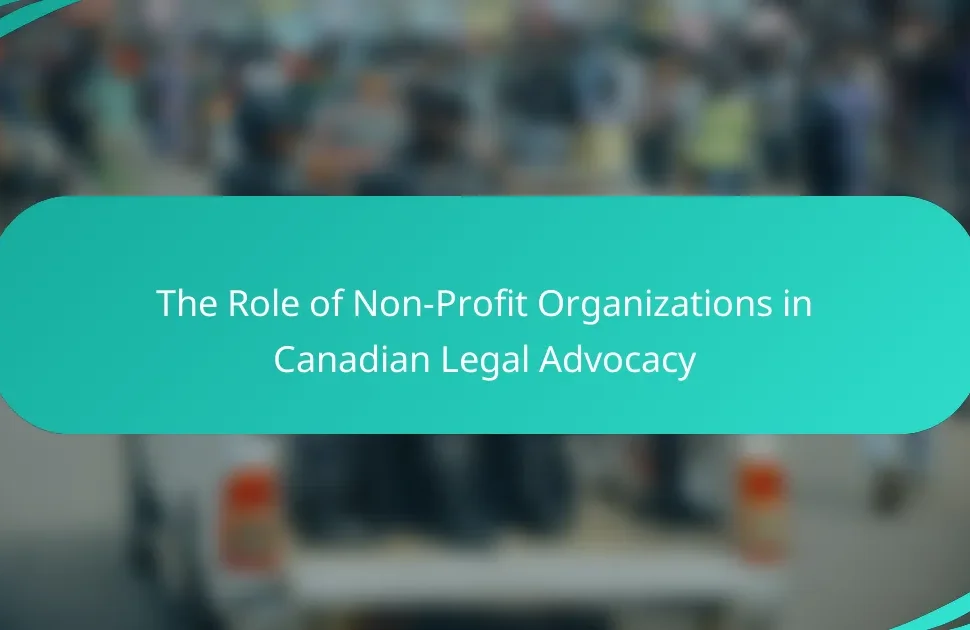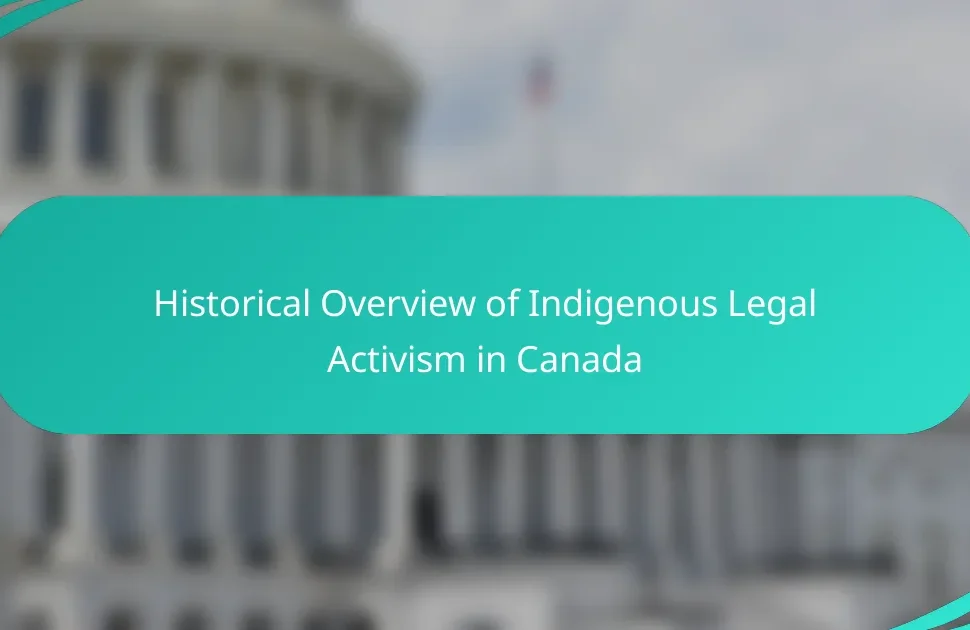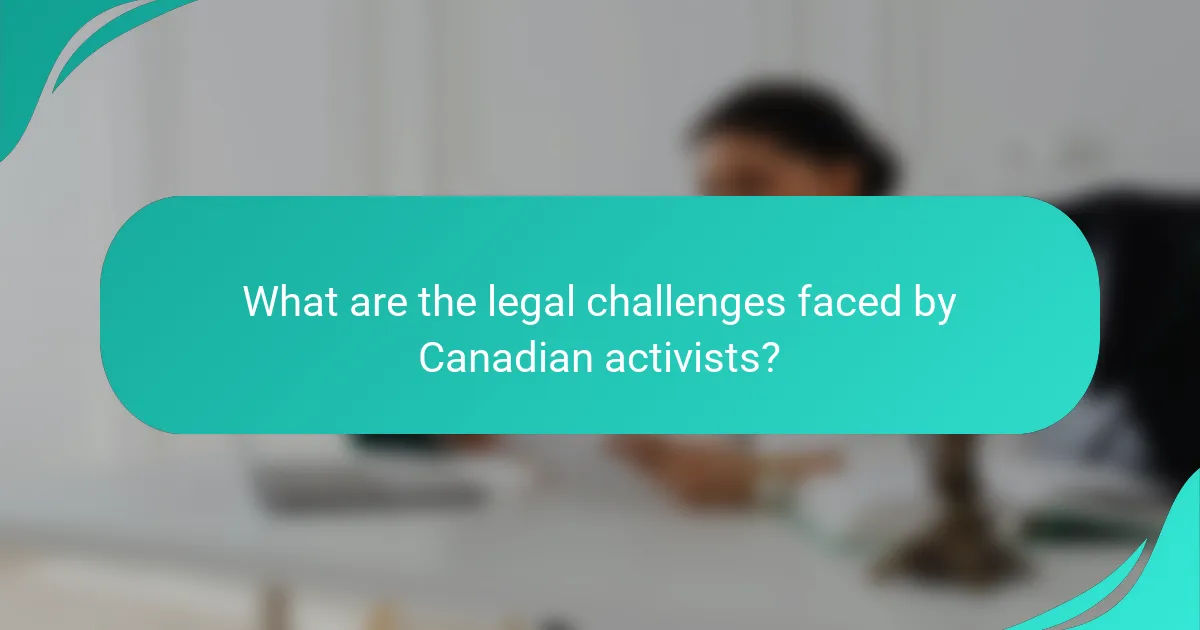
What are the legal challenges faced by Canadian activists?
Canadian activists face various legal challenges, including restrictions on freedom of assembly and expression. These challenges arise from laws that limit protest activities. Activists may encounter legal repercussions for civil disobedience. Additionally, laws regarding trespassing can hinder their efforts on private or public land. Police actions during protests can lead to arrests and charges against activists. Many activists also deal with defamation lawsuits aimed at silencing dissent. Furthermore, regulatory compliance can complicate fundraising efforts for activist organizations. These legal hurdles can significantly impact the effectiveness of activism in Canada.
How do these legal challenges impact activism in Canada?
Legal challenges significantly hinder activism in Canada. These challenges can lead to increased legal costs for activists. Activists may face fines or imprisonment, which discourages participation. Legal actions can create a chilling effect on public demonstrations. Additionally, activists may self-censor to avoid legal repercussions. The complexity of legal frameworks can deter grassroots organizing. Furthermore, legal challenges often divert resources away from advocacy efforts. Overall, these factors can undermine the effectiveness and reach of activist movements in Canada.
What specific laws are often cited in legal challenges against activists?
Laws often cited in legal challenges against activists include trespassing laws, public order offenses, and anti-protest legislation. Trespassing laws are invoked when activists occupy private property without permission. Public order offenses can include charges related to disturbances or disruptions caused by protests. Anti-protest legislation may restrict where and how protests can occur. These laws are frequently used to deter activist actions and suppress dissent. Activists often face legal repercussions under these statutes during demonstrations. Historical instances include arrests during pipeline protests in Canada. Such legal frameworks aim to maintain public order but can also stifle free expression.
How do these challenges vary across different regions in Canada?
Legal challenges faced by Canadian activists vary significantly across regions. In British Columbia, activists often contend with environmental regulations due to resource extraction industries. Alberta presents challenges related to oil and gas development, impacting Indigenous rights. In Ontario, urban activists face issues related to housing and social justice. Quebec has unique language laws affecting activism around cultural preservation. The Atlantic provinces deal with challenges tied to fisheries and marine conservation. Each region’s distinct economic activities and legal frameworks shape these challenges. Statistics Canada reports that regional disparities influence the effectiveness of activism in addressing local issues.
Why do Canadian activists encounter legal obstacles?
Canadian activists encounter legal obstacles due to restrictive laws and regulations. These laws often limit protests and public demonstrations. For instance, the Criminal Code of Canada criminalizes certain forms of civil disobedience. Additionally, environmental activists face challenges from legislation protecting resource extraction. This can lead to arrests and legal action against protestors. Furthermore, activists may encounter legal hurdles related to funding and organizational structure. Non-profit regulations can complicate their operations. Court cases can also arise from conflicts with law enforcement. These legal barriers hinder the effectiveness of their advocacy efforts.
What role does government policy play in these challenges?
Government policy significantly influences the legal challenges faced by Canadian activists. Policies can either support or hinder activist efforts. For instance, restrictive laws may limit freedom of assembly and expression. This can create barriers for activists trying to mobilize public support. Conversely, supportive policies can enhance activist effectiveness. Government funding for social justice initiatives can empower grassroots movements. Additionally, policies that promote transparency and accountability can bolster activist credibility. Historical examples include the impact of the Canadian Charter of Rights and Freedoms. This charter has played a crucial role in protecting activist rights. Overall, government policy is a critical determinant in shaping the landscape for activism in Canada.
How do social movements influence legal responses to activism?
Social movements influence legal responses to activism by shaping public opinion and policy. They often highlight social injustices, prompting legislative changes. For instance, the civil rights movement led to the Civil Rights Act of 1964 in the United States. This act was a direct response to the activism of the movement. Similarly, environmental movements have influenced laws like the Canadian Environmental Protection Act. These movements mobilize citizens and lawmakers to address grievances. They create pressure for legal reforms through protests and advocacy. Research shows that sustained activism can lead to significant legal changes. This demonstrates the power of social movements in shaping legal frameworks.
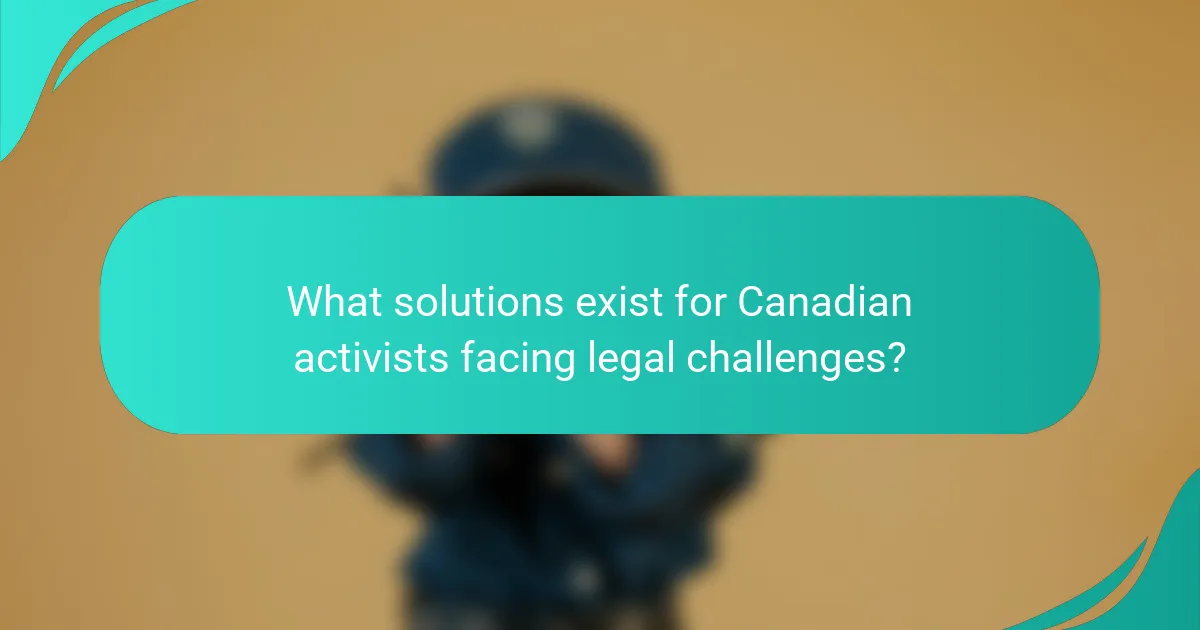
What solutions exist for Canadian activists facing legal challenges?
Canadian activists facing legal challenges can seek legal aid services. Organizations like the Canadian Civil Liberties Association provide support. Activists may also join grassroots movements for collective legal defense. Legal clinics often offer pro bono services for specific cases. Some activists utilize crowdfunding to cover legal expenses. Additionally, public awareness campaigns can mobilize community support. Engaging with legal experts can help strategize defenses. Collaborating with established NGOs can provide resources and guidance.
How can activists navigate the legal landscape effectively?
Activists can navigate the legal landscape effectively by understanding their rights and the laws that govern their actions. Familiarizing themselves with local, provincial, and federal laws is crucial. They should also seek legal advice when planning actions that may lead to legal scrutiny. Building networks with legal experts and organizations can provide essential support. Engaging in training sessions about legal rights can empower activists. Documenting all interactions with authorities can serve as vital evidence. Staying informed about recent legal precedents helps activists anticipate challenges. Utilizing resources from established advocacy groups can enhance their legal strategies.
What resources are available for legal support and advice?
Legal support and advice resources include legal aid clinics, bar associations, and online legal services. Legal aid clinics offer free or low-cost assistance to individuals who qualify based on income. Bar associations often provide referral services to connect individuals with attorneys specializing in relevant fields. Online legal services, such as websites offering legal document templates and advice, are also widely available. Additionally, non-profit organizations may provide legal support specifically for activists facing unique challenges. These resources ensure that individuals can access necessary legal guidance and representation.
How can collaboration with legal experts enhance activist efforts?
Collaboration with legal experts can significantly enhance activist efforts by providing essential legal knowledge and support. Legal experts can help activists understand their rights and the legal framework governing their actions. This knowledge reduces the risk of legal repercussions during protests or campaigns. Additionally, legal experts can assist in drafting effective legal documents, ensuring compliance with laws. They can also help activists navigate complex legal systems, making it easier to challenge unjust laws. Furthermore, legal experts can represent activists in court, increasing the chances of favorable outcomes. Historical instances show that legal representation has led to successful challenges against oppressive legislation. For example, the legal team in the landmark case of R v. Oakes effectively defended the rights of activists, setting a precedent for future cases.
What strategies have proven successful in overcoming legal challenges?
Successful strategies for overcoming legal challenges include thorough legal research, effective communication, and coalition-building. Legal research helps activists understand the laws and precedents that apply to their situation. This knowledge enables them to craft strong legal arguments. Effective communication with stakeholders, including the public and media, raises awareness and garners support. Coalition-building with other organizations amplifies their message and resources.
Engaging in advocacy campaigns can influence legislation and public opinion. Utilizing social media platforms allows for rapid dissemination of information. Legal representation by experienced attorneys can provide critical guidance and support. Documenting evidence meticulously strengthens their case in court. These strategies have been used successfully by various activist groups in Canada to navigate legal hurdles.
Which case studies exemplify successful legal navigation by activists?
The case studies that exemplify successful legal navigation by activists include the 2016 Trans Mountain Pipeline protest and the 2019 Wet’suwet’en land rights dispute. In the Trans Mountain case, activists effectively utilized legal injunctions to challenge construction permits. They argued environmental risks and Indigenous rights, which led to a temporary halt in construction. The Wet’suwet’en dispute involved activists asserting their land rights based on ancestral claims. Legal actions resulted in increased public awareness and support for Indigenous sovereignty. These cases highlight the strategic use of legal frameworks to advocate for social and environmental justice in Canada.
How can public awareness campaigns mitigate legal risks?
Public awareness campaigns can mitigate legal risks by educating the public about laws and regulations. This education helps individuals understand their rights and responsibilities. When people are informed, they are less likely to engage in illegal activities. Awareness campaigns can also promote compliance with legal standards. For instance, campaigns that highlight the consequences of non-compliance can deter unlawful behavior. Furthermore, these campaigns can foster community support for activists. A supportive community can provide legal backing and resources. Studies show that informed communities are more resilient against legal challenges. Therefore, public awareness campaigns play a crucial role in reducing legal risks for activists.
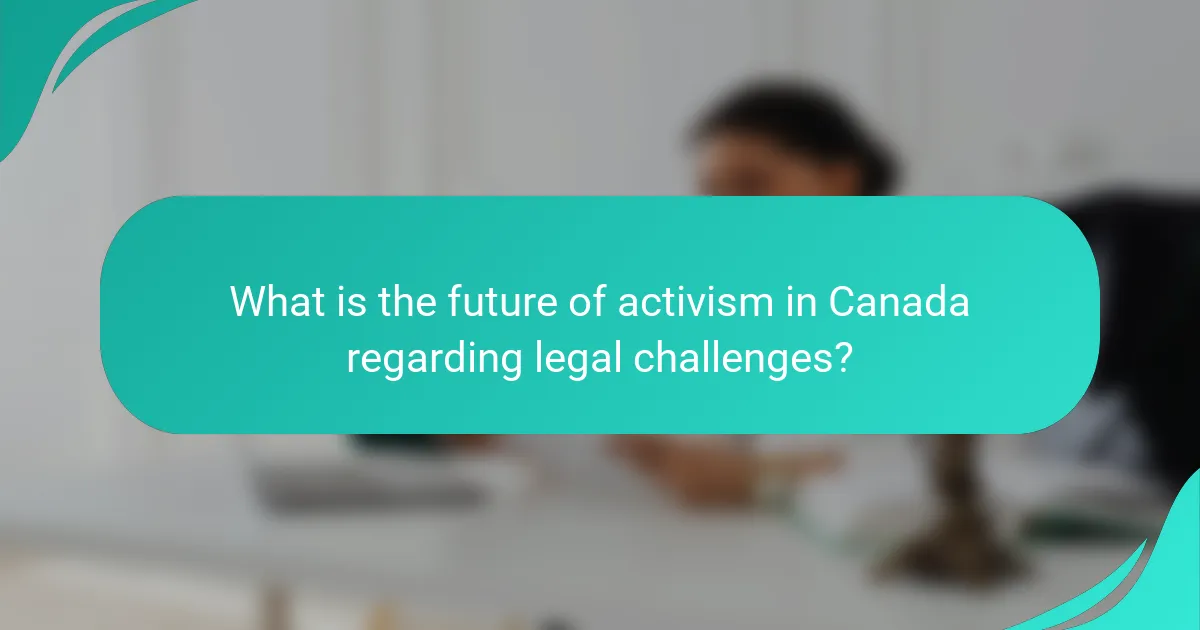
What is the future of activism in Canada regarding legal challenges?
The future of activism in Canada regarding legal challenges is likely to involve increased use of strategic litigation. Activists will focus on leveraging the legal system to advance social justice. This trend is supported by a growing recognition of the impact of legal precedents. Historical cases, such as the 2015 Supreme Court decision on assisted dying, illustrate the power of legal challenges in shaping policy. Additionally, the rise of digital activism is expected to influence legal strategies. Social media campaigns can mobilize support quickly, pressuring lawmakers and courts. As public awareness of legal rights increases, more individuals may engage in activism. This engagement can lead to a more robust legal framework for addressing social issues. Overall, the intersection of activism and legal challenges will continue to evolve in Canada.
How are changing laws affecting the landscape for activists?
Changing laws are significantly impacting the landscape for activists. New regulations can either restrict or enhance their ability to organize and express dissent. For instance, laws targeting protest activities can limit public demonstrations. This creates challenges for activists seeking to mobilize support for their causes. Conversely, some laws may provide greater protections for free speech and assembly. These changes can empower activists to advocate more effectively. Historical examples show that shifts in legislation often lead to increased public awareness and engagement. In Canada, recent legal reforms have sparked both concern and optimism among various activist groups.
What potential reforms could improve the situation for activists?
Legal reforms could enhance protections for activists in Canada. Implementing stronger anti-repression laws is essential. These laws would safeguard activists from harassment and intimidation. Additionally, establishing clearer guidelines for police conduct during protests is necessary. This would ensure accountability and protect the right to peaceful assembly. Furthermore, enhancing legal aid for activists could improve access to justice. Increased funding for public interest litigation would support cases challenging unjust laws. Lastly, creating a national framework for protecting whistleblowers would encourage activists to expose wrongdoing without fear of reprisal. These reforms collectively aim to create a more supportive environment for activism in Canada.
What best practices can activists adopt to avoid legal issues?
Activists can adopt several best practices to avoid legal issues. First, they should understand local laws related to protests and demonstrations. Familiarity with regulations helps prevent unlawful actions. Second, activists should obtain necessary permits for gatherings. This ensures compliance with local ordinances. Third, they should maintain clear communication with law enforcement. Establishing a dialogue can prevent misunderstandings during events. Fourth, activists should document all activities. Keeping records provides evidence of lawful conduct if disputes arise. Fifth, they should educate participants on their rights. Knowledgeable individuals are less likely to engage in illegal behavior. Lastly, seeking legal advice before organizing events can help identify potential legal pitfalls. Consulting with legal experts ensures that activists are prepared for any challenges.
How can activists stay informed about legal changes and protections?
Activists can stay informed about legal changes and protections by subscribing to legal newsletters and updates from advocacy organizations. These organizations often provide timely information about new laws and regulations. Activists can also follow government websites and legal blogs that specialize in activism-related topics. Social media platforms can serve as valuable resources for real-time updates. Networking with legal experts and attending workshops can enhance understanding of legal frameworks. Engaging in community forums and discussions can provide insights into local legal developments. Many universities offer resources and events that focus on legal issues relevant to activists.
The main entity of this article is the legal challenges faced by Canadian activists. The article outlines various legal obstacles, including restrictions on freedom of assembly and expression, trespassing laws, and anti-protest legislation, which hinder activism across different regions in Canada. It discusses the impact of these challenges on activism, such as increased legal costs and self-censorship, and highlights the role of government policy and social movements in shaping legal responses. Additionally, the article provides solutions for activists, including legal aid resources, strategies for navigating the legal landscape, and potential reforms to improve protections for activists.
